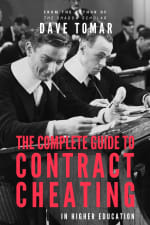This is an important skill, not just in school or on social media, but in real life. So if you’re on the hunt for solid facts, check out our constantly growing library of The Most Controversial Topics For Your Position Paper.
We recognize, however, that knowing a lot of facts isn’t the same as being able to write about these facts in a convincing or authoritative way. Writing an excellent position paper is a multi-step process that requires you to integrate both fact and opinion into a coherent and compelling essay. Lucky for you, we’ve got a handy step-by-step guide on how to do this.
How To Write a Position Paper
1. Choose a Topic That Interests You
Start with something you actually care about. If given the freedom, choose a subject that has personal meaning for you. Having real passion for the subject matter can be energizing as you dive into the research and it can infuse your writing with authenticity.
Many students like to write about controversial topics. Our study starters cover the top 25 controversial topics today.
2. Develop a Thesis Statement
Once you’ve got a subject, it’s time to define exactly where you stand on the issue. What is the point you hope to prove in your position paper? And how do you plan to prove it? If you’re not sure exactly where you stand, this is the starting point in your research. Find out what some of the leading thinkers, journalists, and public figures are saying on the subject. Which viewpoint resonates most with you? You should come away from this process with a thesis statement that both indicates your viewpoint and lays out the supporting points that will ultimately shape your essay. For instance, if you’re writing about a policy issue, your thesis might say something like “The newly proposed policy to ______ would be beneficial to the general public because it would ______, _________, and ________.
3. Identify Credible Sources
As you begin your research, it is absolutely critical that you identify only credible sources including primary sources, scholarly journals, and articles from legitimate news outlets. Of course, every source has its own implicit biases. But as you identify and use these sources, it’s your job to identify and recognize those biases. You can use a source provided by a politically biased think tank as long as you explicitly identify that bias. The most important thing you can do, as you gather resources, is ensure that they come from valid outlets, that you recognize any affiliations that might shape their perspective, and that you eliminate any sources that peddle in disinformation.
For more tips on how to do this, check out our article on How Students Can Spot Fake News.
4. Build Your Reference List
Now that you’ve identified credible resources, create your reference list. Citation is a building block of both the research process and the broader concept of academic integrity. As a student, you are expected to draw on the findings of those who came before you. But you have to credit those scholars in order to do so. Make sure you adhere to the formatting style indicated by your academic institution, course, and instructor, whether you are required to write in MLA, APA, Chicago, or its exotic-sounding twin, Turabian. Purdue’s website provides one of the more reliable style guides for your formatting reference needs.
We have a database to help you find influential scholars in a variety of subjects. We also point out influencers related to nearly 30 of the most controversial topics
5. Do Your Research
This step is all about gathering information. Now that you’ve locked in your sources, it’s time to dive deeper. If you enjoy learning new things, this is the fun part. Get comfortable and start reading. Research is the process of discovery, so take your time. Allow yourself to become absorbed in the subject matter, to be immersed, to lose yourself in the information. But come up for air every once in a while so you can take notes. Gather the ideas, statistics, and direct quotes from your research that ultimately strengthen your argument. And don’t shy away from information that contradicts your argument either. This is meant to be a learning process, so allow your position on the subject to evolve as you are presented with new information. The thesis that you’ve written is a starting point, but it’s not set in stone. If your research leads you in a different direction, don’t be afraid to refine or even revise your thesis accordingly.
6. Outline Your Position Paper
Now that your thesis has been reinforced by research, create a basic outline for what you’ll be writing. If you do this part correctly, the rest should simply be a process of filling in the blanks. Below is a basic framework for how you might structure a position paper:
- Introduction
- Setting up the subject
- Thesis Statement
- Basic Argument
- Identification of Supporting Evidence
- Supporting Evidence 1
- Set Up
- Key Quote
- Explanation
- Supporting Evidence 2
- Set Up
- Key Quote
- Explanation
- Supporting Evidence 3
- Set Up
- Key Quote
- Explanation
- Counterpoint
- Identification of Opposing Viewpoint(s)
- Refutation of Opposing Viewpoint(s)
- Conclusion
- Reiterate Thesis
- Tie Together Supporting Arguments
7. Build Your Argument
The outline above is merely a framework. Now it’s up to you to infuse that framework with your personality, your perspective and your voice. Your thesis and supporting quotes are the bones of your essay, but you’ll be adding the flesh to those bones with your set ups and explanations. This is your chance to explain why the evidence located in your research makes you feel the way you do. Remember, you are writing a fact-based essay on something that should trigger emotions in both you and the reader. Do not be afraid to lean into these feelings for your writing, as long as you keep those feelings strongly grounded in the facts of the case.
8. Address the Counterpoint
No argument is complete without recognition of its counterpart. Your willingness to acknowledge opposing viewpoints is a show of faith in your own argument. This gives you a chance to provide an honest appraisal of an opposing viewpoint and to confront this appraisal with fact-based refutation.
9. Tie It All Together
Now that you’ve spent your time fully immersed in the argument, it’s time to pull the pieces together. Revisit your introduction. Your opening paragraph should be crisp, engaging, and straight to the point. Don’t bury the lead. The purpose of your essay should be stated early and clearly. Likewise, build a concluding section that offers a compelling way of restating the thesis while incorporating some of the new things we’ve learned from reading your essay. Tie your various supporting arguments together to illustrate that we have all learned enough to agree with your initial position. And revisit each of your supporting paragraphs to ensure that each idea logically flows into the next. Write natural segue sentences between paragraphs and ensure that the connection between each supporting argument and your thesis is clear.
10. Proof, Edit, Revise, Repeat
Now you’ve assembled an essay, but it needs work. That’s not an insult. Anything ever written always needs work. Start with proofing. Look for typos, grammatical errors and incomplete sentences. Give your essay a technical cleaning. But you should also read for style, tone and substance. Does your argument hang together? Is it compelling? Do you adequately prove your point? You may find that this is an opportunity to trim gratuitous information or to add supporting information that might strengthen your argument. And as you revise your essay, try reading your work out loud. Hearing your own words out loud can reveal areas where your point might not come across as clearly. Spend as much time as you need on this step. Don’t be afraid to make substantive changes during this process. Invariably, your final draft will be significantly stronger than your rough draft.
And I’ll leave you with just one more thought-one that has always helped me as a writer. This tip comes from author Henry Miller’s famous 11 Commandments of Writing. Among the numerous valuable tips you can draw from his list, my personal favorite says “Don’t be nervous. Work calmly, joyously, recklessly on whatever is in hand.”
This is great advice at any stage in your writing career. Dive in and write fearlessly.
And now that you’ve got a step-by-step roadmap for attacking your position paper, get more valuable tips, tricks, and hacks from our comprehensive collection of Study Guides and Study Starters.
And if you are struggling with how to take effective notes in class, check out our guide on note taking.


